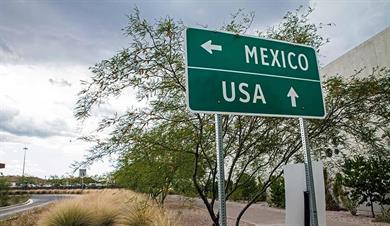 As a dynamic and vital part of local, national and international politics and economic growth, the United States-Mexico borderlands are an essential element of the Texas A&M University School of Law Global Programs curricula.
As a dynamic and vital part of local, national and international politics and economic growth, the United States-Mexico borderlands are an essential element of the Texas A&M University School of Law Global Programs curricula.
The U.S.-Mexico borderlands have loomed large in the mythology of Texas. Students experience the power of the borderlands, as the myth collides with the reality of the 21st century in the law school’s collaborative summer program in Laredo, Texas.
Texas A&M Borderlands Law Program
The Borderlands Law Program in Laredo directed by Professor Stephen Alton consists of two main components: a joint TAMU Law/TAMIU immersive course followed by internship/externship.
Course:
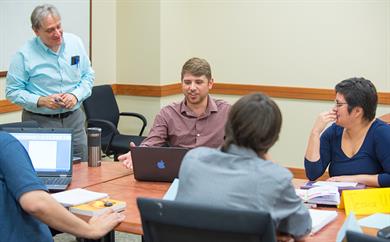 The first is a two-credit, two-week course called “Borderlands Law,” (officially “Special Topics in International Law: Borderlands Law - Contemporary Legal Issues Relating to the U.S.-Mexico Border”) held each May at Texas A&M International University (TAMIU) in Laredo. The class is limited to 12 students, half from Texas A&M School of Law and half from TAMIU (both undergraduate and graduate students).
The first is a two-credit, two-week course called “Borderlands Law,” (officially “Special Topics in International Law: Borderlands Law - Contemporary Legal Issues Relating to the U.S.-Mexico Border”) held each May at Texas A&M International University (TAMIU) in Laredo. The class is limited to 12 students, half from Texas A&M School of Law and half from TAMIU (both undergraduate and graduate students).
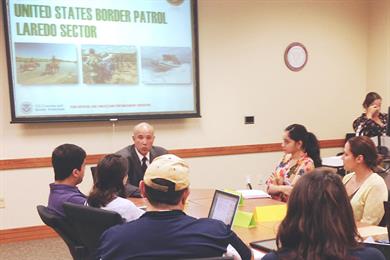 The intensive Borderlands Law class exposes students to current legal issues affecting the U.S.-Mexico border region, such as immigration, trade and business, and natural resources, water, and the environment. Students hear from a number of guest speakers, including Customs and Border Patrol officers and federal judges and magistrates.
The intensive Borderlands Law class exposes students to current legal issues affecting the U.S.-Mexico border region, such as immigration, trade and business, and natural resources, water, and the environment. Students hear from a number of guest speakers, including Customs and Border Patrol officers and federal judges and magistrates.
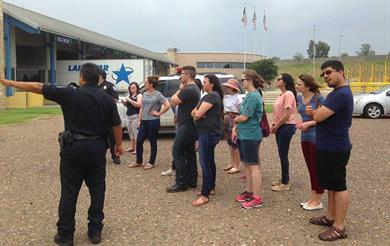
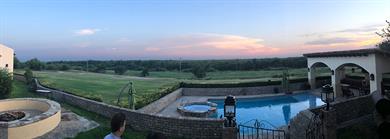 The hands-on class takes several relevant field trips in Laredo to places such as the bridges linking the U.S. and Mexico, the warehouse of a local customs broker, and the field office of the Texas A&M University Colonias Program.
The hands-on class takes several relevant field trips in Laredo to places such as the bridges linking the U.S. and Mexico, the warehouse of a local customs broker, and the field office of the Texas A&M University Colonias Program.
“One of the highlights of the Borderlands Law class is a tour of area colonias to see the conditions there firsthand. Another highlight is a class farewell dinner hosted by a couple (who are both former students) on their scenic ranch located directly on the Rio Grande,” related Professor Alton.
Internships/Externships:
The second component of the Borderlands Law Program is the externship or internship placements in Laredo for the law students. These placements last five or six weeks and begin immediately after the conclusion of the Borderlands Law class. Among the places where the law students have served their externships and internships in Laredo are:
- the local office of Texas RioGrande Legal Aid,
- the Webb County District Attorney’s Office,
- the local office of the Federal Public Defender,
- various local law firms,
- and the chambers of U.S. district judges and magistrate judges.
“Many members of the Laredo bench and bar have generously given of their time and knowledge in taking our students as interns and externs,” said Professor Alton.
Borderlands Law By the Numbers
- Highlights of the Borderlands Law Program and its course and internship/externship students, since its inception in 2016 through 2019:
|
210
|
Pro bono legal hours provided to the community via Texas RioGrande Legal Aid by TAMU Law students as part of the Texas Access to Justice Commission 2017 “Pro Bono Spring Break” program
|
|
30
|
Pro bono legal hours provided to the community by TAMU Law students, faculty & clinical staff at TAMU Colonias Program's Laredo field office in May 2019
|
|
24
|
TAMIU students exposed to law school and the legal field as a career path
|
|
23
|
TAMU Law students experienced legal issues and law practice along the border
|
|
20
|
TAMU Law students served summer internships/externships in the Laredo area
|
|
7
|
TAMIU Borderlands Law course graduates applied to law school
|
|
5
|
TAMIU course graduates attending or planning to attend Texas A&M Law School
|
|
1
|
TAMIU course graduate, Amanda Sarmiento, now a TAMU Law student, won BARBRI's One Lawyer Can Change the World national scholarship competition; awarded $10K scholarship
|
|
1
|
TAMIU course graduate, Karina Rios, now a TAMU Law student, received the Dallas Bar Foundation Justice James A. Baker Memorial Fellowship for an internship with Chief Justice Nathan Hecht of the Texas Supreme Court
|
Community Impact
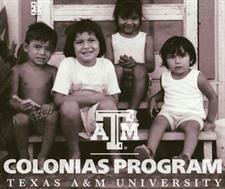 In May 2019, five Texas A&M Law students in the Borderlands Law class, along with Prof. Alton and Texas A&M Legal Clinics supervising attorney Lynn Rodriguez, provided 30 hours of pro bono legal services to the clients of the Texas A&M Colonias Program in their Laredo office. The students performed intake, interviewed clients, and sat in on and provided translation for counseling sessions.
In May 2019, five Texas A&M Law students in the Borderlands Law class, along with Prof. Alton and Texas A&M Legal Clinics supervising attorney Lynn Rodriguez, provided 30 hours of pro bono legal services to the clients of the Texas A&M Colonias Program in their Laredo office. The students performed intake, interviewed clients, and sat in on and provided translation for counseling sessions.
In 2017, a group of 15 Aggie law students worked in Laredo with Texas RioGrande Legal Aid as part of the Texas Access to Justice Commission “Pro Bono Spring Break” program. The students contributed 450 total hours of pro bono service. In addition to shadowing practicing attorneys and attending prove-ups at Social Justice Night Court at the Webb County Justice Center, the students assisted clients with expunctions, uncontested divorces and certain kinds of immigration matters. Seven of the 15 students participated in the Borderlands Law Program.
Their work was the subject of news articles in the Laredo Morning Times, as well as on Laredo’s KGNS-TV and TeleNoticias Laredo.